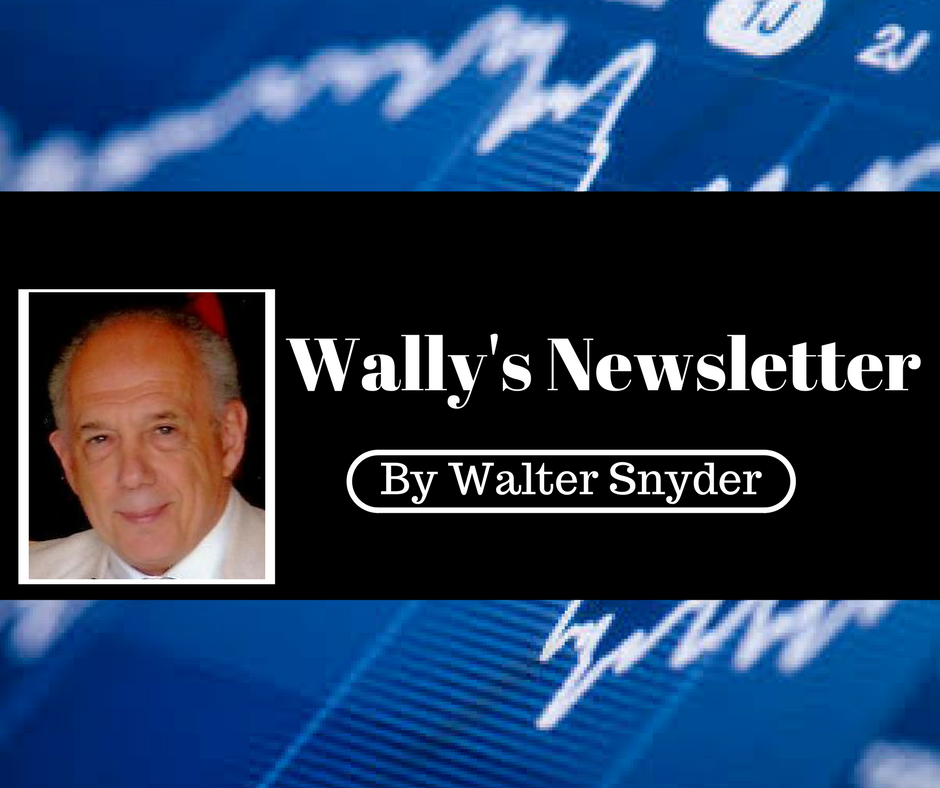Debt, Growth and Inflation (by W. Snyder)

Economists wax eloquent over the platitude that debt stifles growth. It is therefore not surprising that growth in the US has slowed since 2008 and Europe struggles to match pre-crisis results. Japan is a special case that has been stagnating for decades with debt reaching unreal levels.
With companies deep in debt as a result of share buybacks with relatively little investment in capital expenditure, it is hard to see where growth will come from. Is it growth when “animal spirits” on Wall Street overprice stocks? In fact finance presently accounts for 7% of GDP instead of the 3% normal in the past.
What is going to grow is inflation as that is the only way out of excessive debt if growth is weak. Investors will be caught between a bear bond market and falling equity prices as P/E ratios of 24 are excessive. At a certain point bubbles burst.
The idea that the economy can grow its way out of debt has not had much success to date. Closely linked to this pious wish is the stated desire of central banks to achieve an inflation rate of 2% without much explanation given as to why 2% is the magic number. Given the excessive sovereign and corporate debt in the US, one could think that higher inflation was the solution to the debt problem. This has not proven to be the case because the economy is barely ticking over.
The Fed can fight inflation by raising interest rates under normal conditions. Needless to say, current conditions are hardly normal. Higher interest rates mean that servicing the debt becomes much more expensive, and the government cannot afford to start paying normal interest rates on its debt. The US also has a huge trade deficit, despite which the dollar has not yet collapsed. But that is another story.
Because of QE, ZIRP and NIRP the Fed finds itself constrained to raise interest rates to be able to intervene effectively when the next downturn is noticed, which is usually long after it begins. The problem is that raising interest rates in the present US financial environment is more than likely to bring on a crisis due to inflated equity prices thanks to the Fed`s policy of keeping interest rates low.
Investors who hold bonds in their portfolios will see bond prices head south as the Fed raises interest rates. As the flight out of bonds gathers momentum, equity prices will similarly suffer as new bond issues produce higher ROI. One can thus expect much higher volatility in the markets as opposed to the extremely low 10 points that has become usual on Wall Street. At that point the derivative market will start to react, and options traders will find that many trades end up going badly.
Walter Snyder
info@swissfinancialconsulting.ch
Disclaimer
This Newsletter has been prepared by WWS Swiss Financial Consulting SA (the company). Even though every effort has been taken to ensure the accuracy of the content of the Newsletter, there is absolutely no guarantee that the information contained in it is correct, up-to-date, accurate or otherwise applicable. It is not intended as a solicitation, invitation or recommendation for the purchase or sale of any investment fund or product or security or financial instrument or to participate in any particular trading strategy or banking product in any jurisdiction. It is not to be distributed in any country or area where it is legally prohibited. No liability whatsoever is or will be assumed by the company for any damage, loss or negative result of any sort ensuing from following views expressed and contained in the Newsletter. Investors themselves assume the full risk for any decisions that they take (caveat emptor). The Newsletter may not be reproduced or published by anyone anywhere in any way or form without the express written permission of the company.

